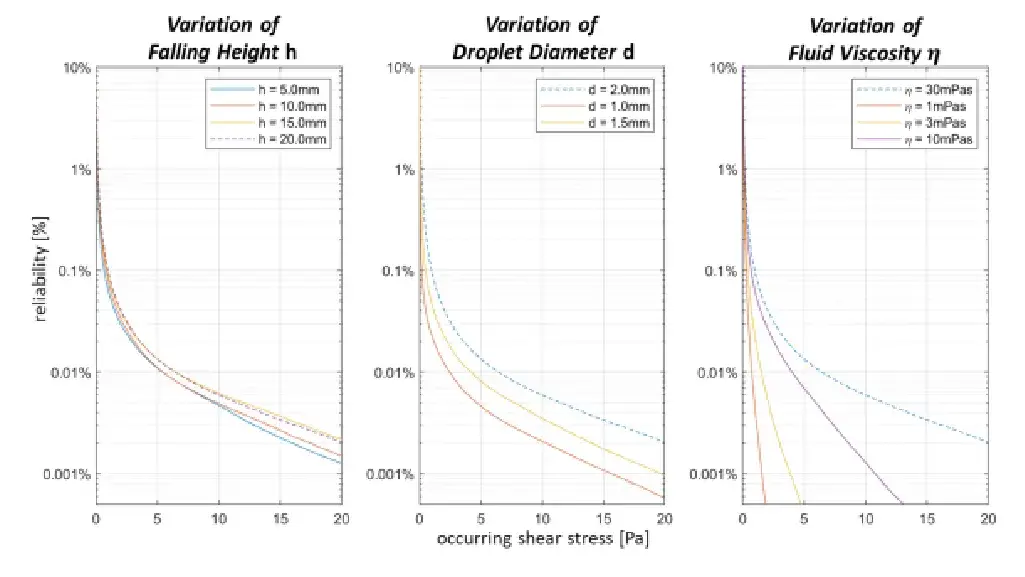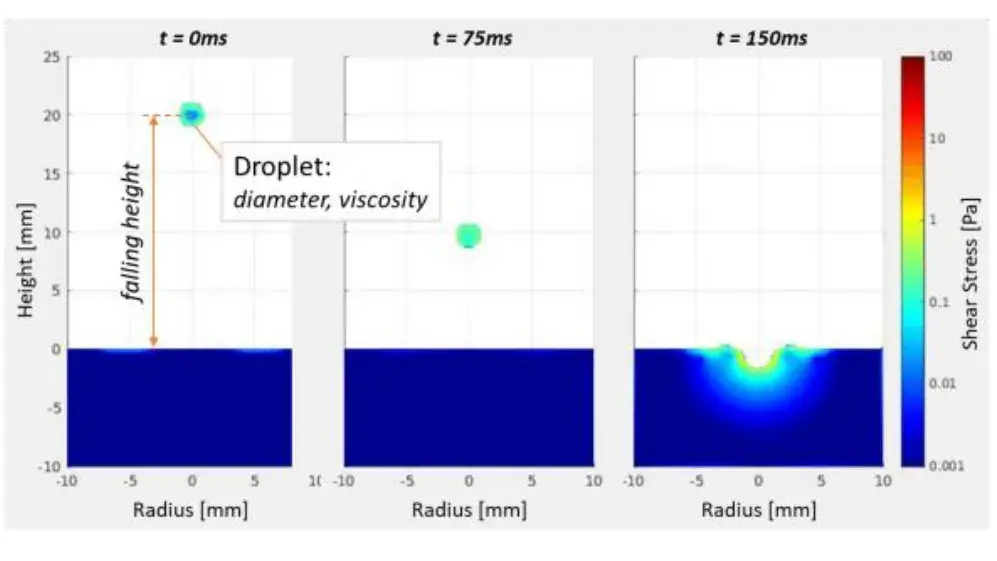CFD Modelling of Droplet Impact into Resting Fluid
When transporting a vial filled with liquid, the fluid is exposed to external vibrations from the transport vehicle. These vibrations cause motion and therefore shear stresses and pressure forces in the fluid. When it comes to pharmaceutical fluids, it is essential to understand these shear and pressure conditions because they can lead to the degradation of the drug. In certain conditions, droplets can be formed. The presented work investigates the re-impact of such a droplet into the surface of the fluid and the corresponding shear forces using detailed CFD simulations.
During the transportation of liquid drugs, the mechanical stress on the fluid has a major impact on the degradation of the active ingredient of the drug. Former studies investigated the vibration-based formation of wave patterns and wave intensities at the surface of the fluid inside a transport vial. These waves can lead to splashing. The present study focuses on the estimation of the shear stress caused by splashing to gain insight into the relevance of this phenomenon and to determine the most important influence parameters.
Thereby, a falling droplet, which impacts a surface of a resting liquid in a cylindrical domain is considered. The impact and immersion of the droplet into the surface generate complex agitation of the fluid and leads to the occurrence of shear stresses. These shear stresses depend on parameters such as falling height, droplet diameter and viscosity of the fluid.
Using computational fluid dynamics for a two-phase system, said degrees of freedom were investigated in relation to associated shear conditions. Due to the symmetrical nature of the simulation, the resulting shear stresses in the fluid phase have been averaged in an azimuthal direction to gain insight into the spatial region of energy dissipation. Furthermore, based on a statistical evaluation of the occurring shear stress values, a reliability function has been calculated to analyze the probability of occurrence of a certain shear load when changing a parameter.
The study has shown that peak shear stresses due to splashing are much higher (up to 20 times more) than for simple wave motion scenarios. Further, a significant increase in occurring shear stresses and a decrease in the penetration depth can be seen when increasing the fluid's viscosity. The falling height and the droplet diameter have only a minor influence on the effects.
An experimental setup has been designed to validate the simulation. The test case has been realized using water glycerol solutions of varying viscosity in a 6ml vial and methylene blue-colored droplets from a needle, positioned above the vial. The droplet impact has been captured on video for a qualitative comparison of the resulting penetration depth.

